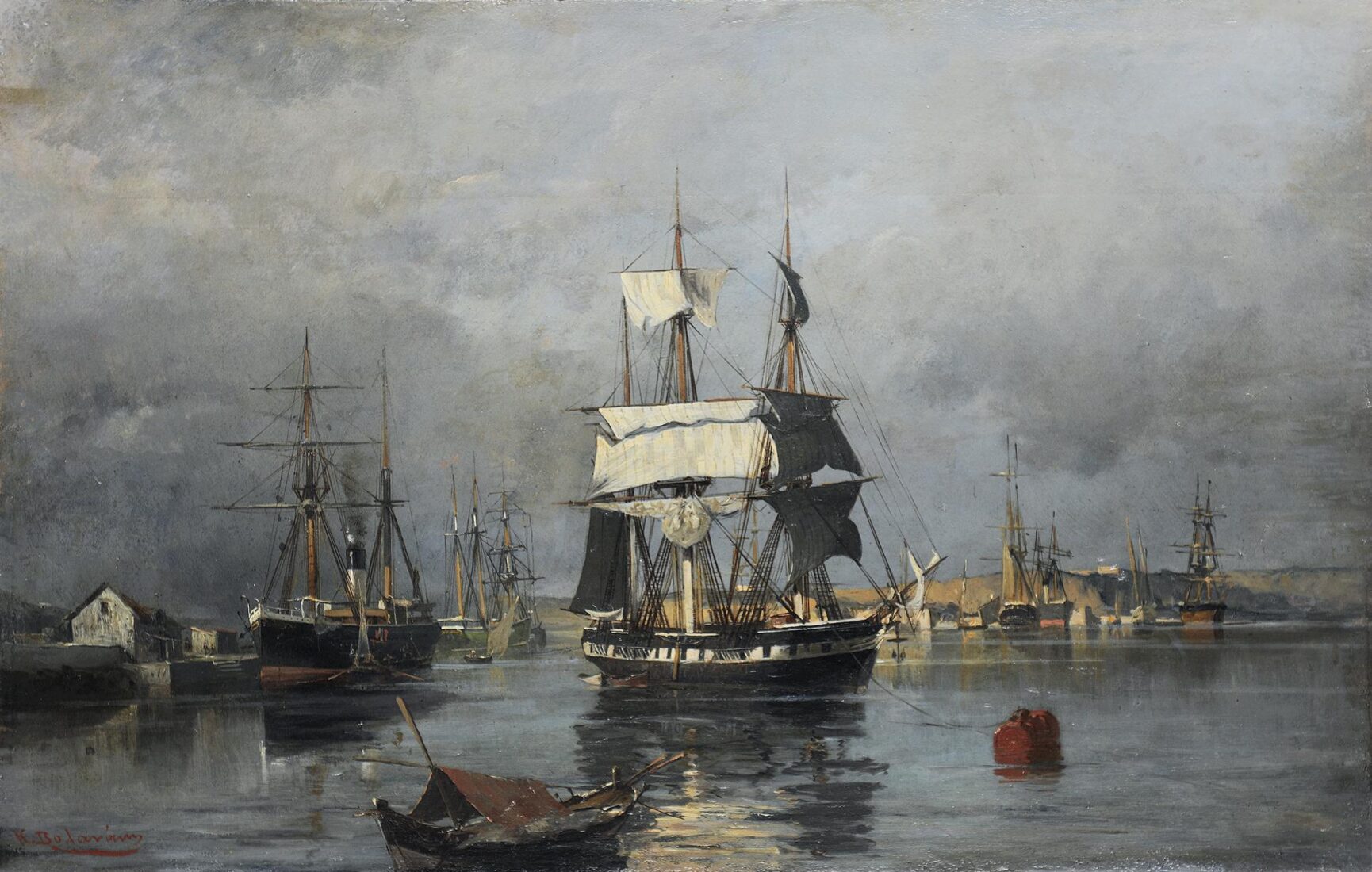

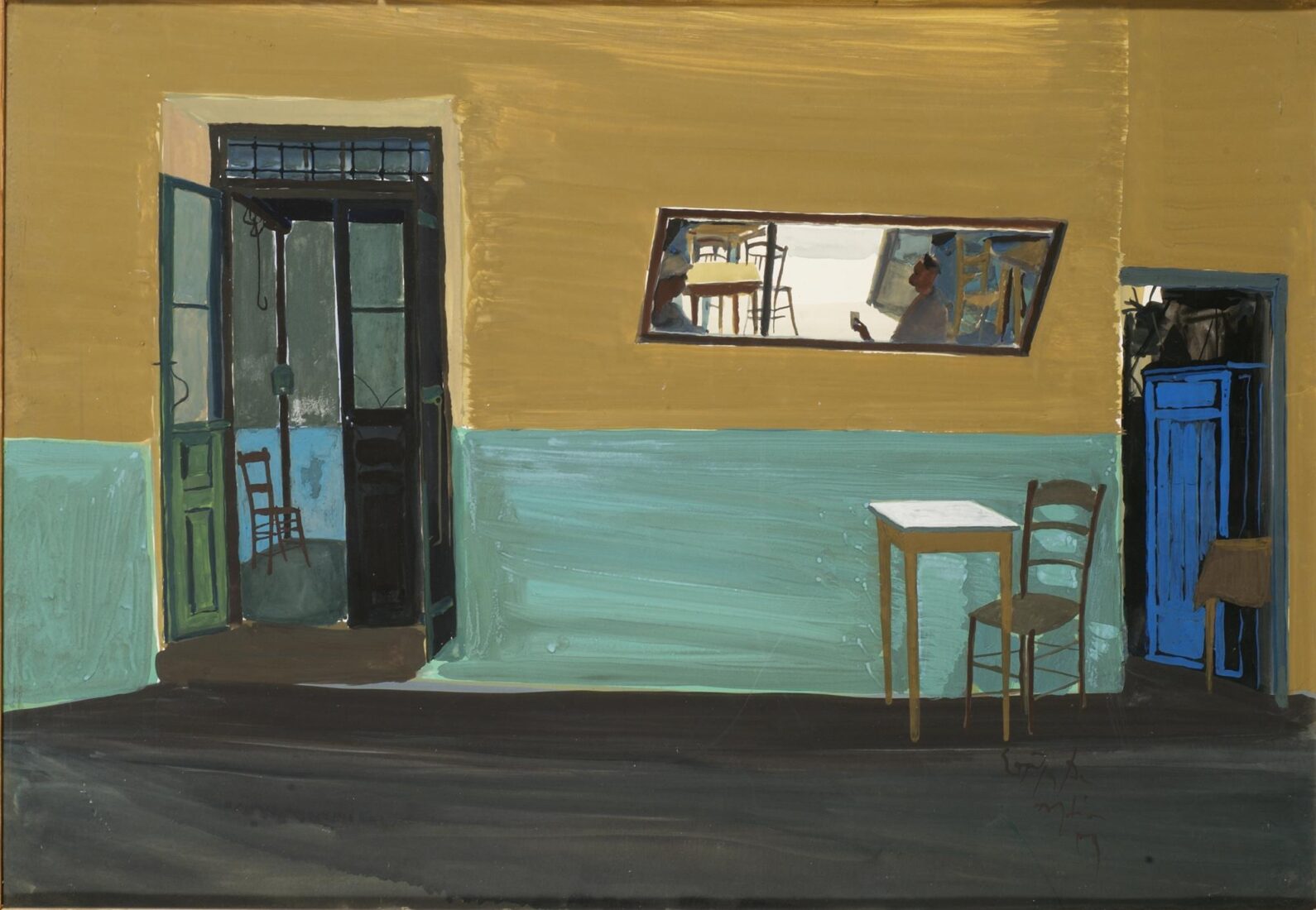
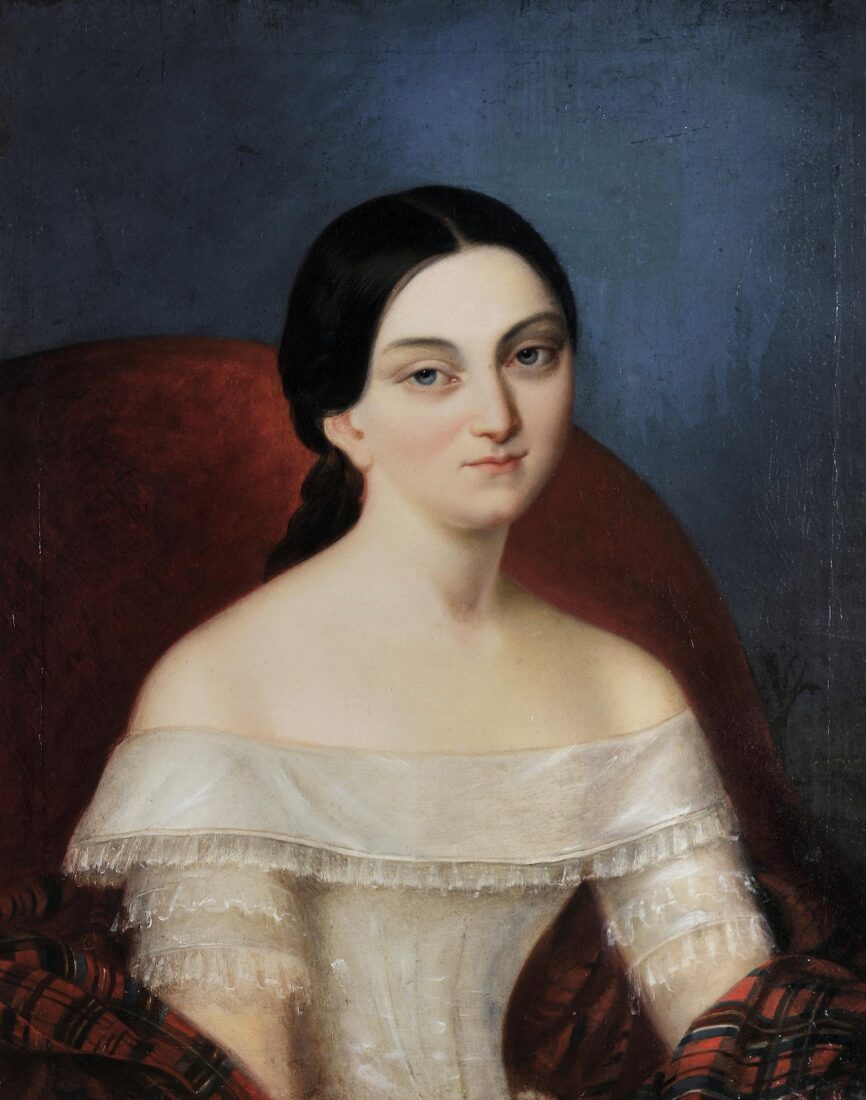
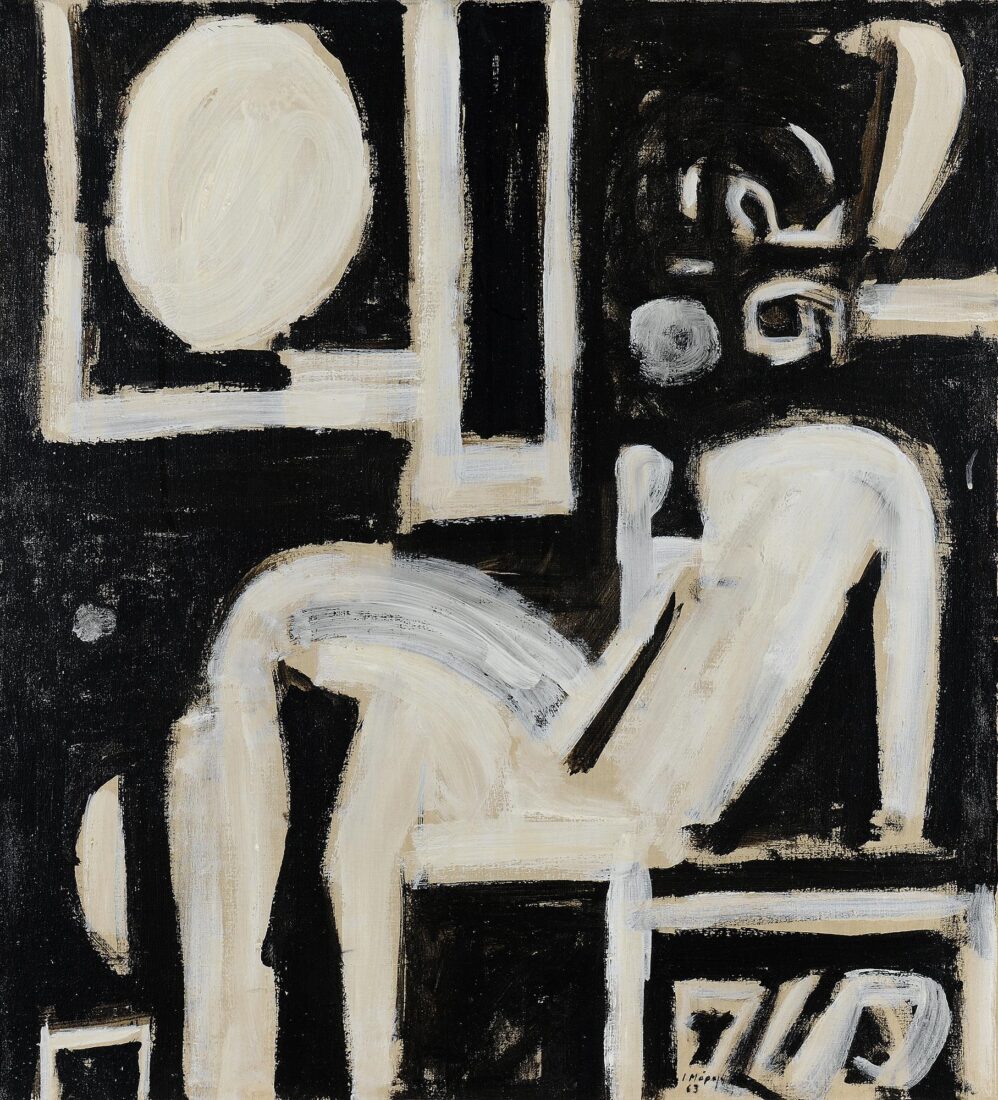
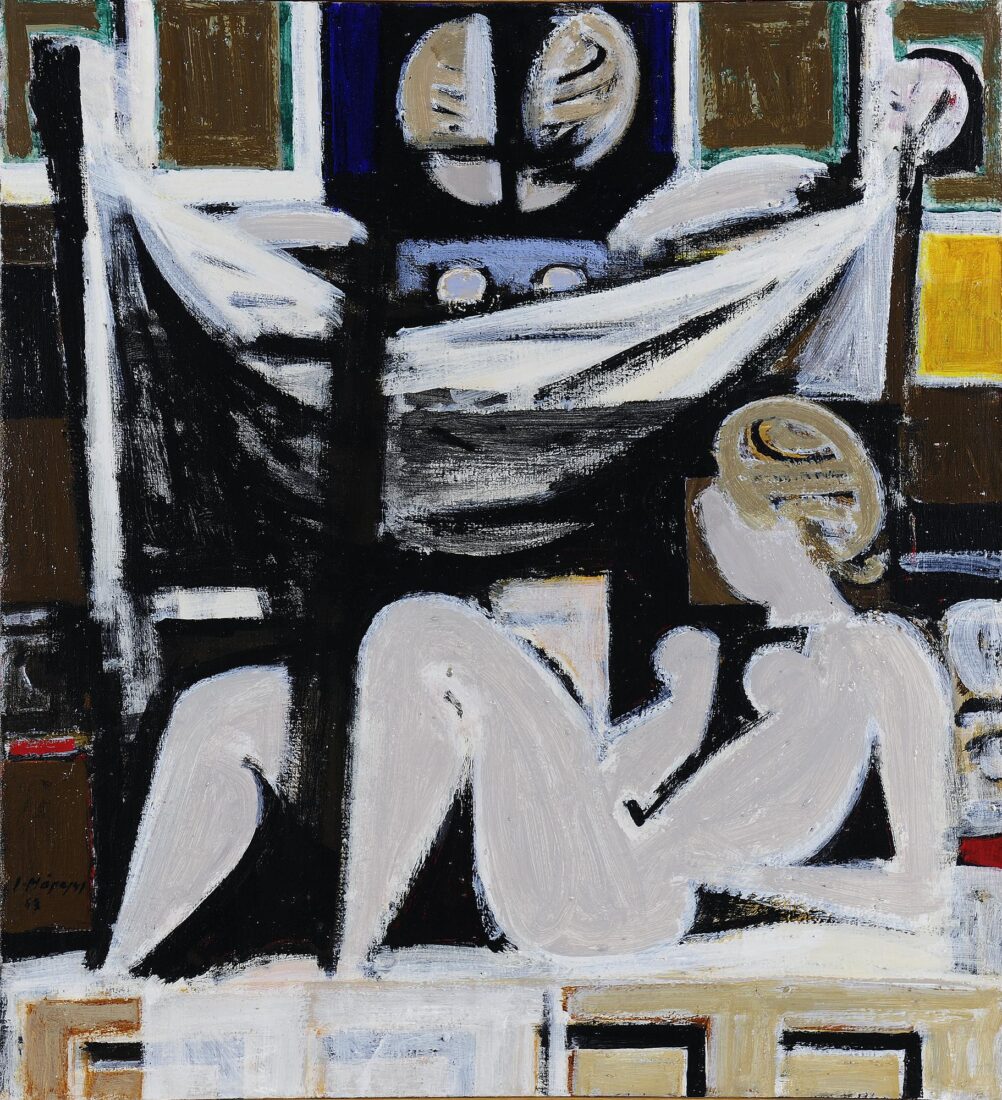
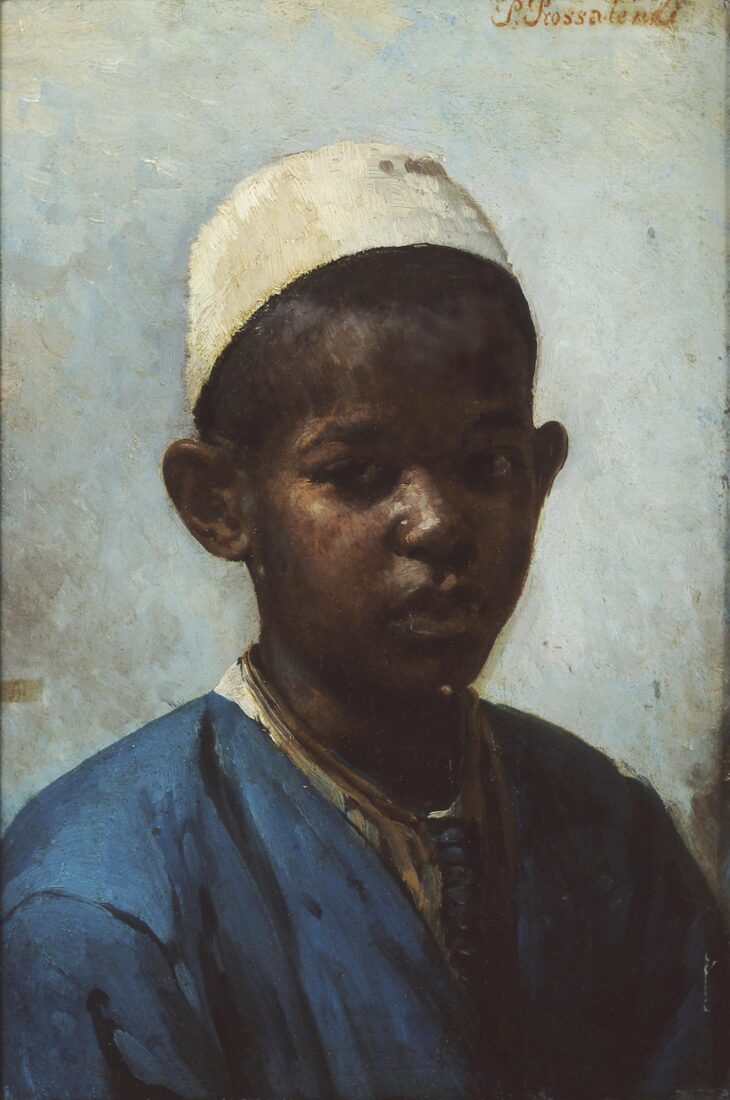
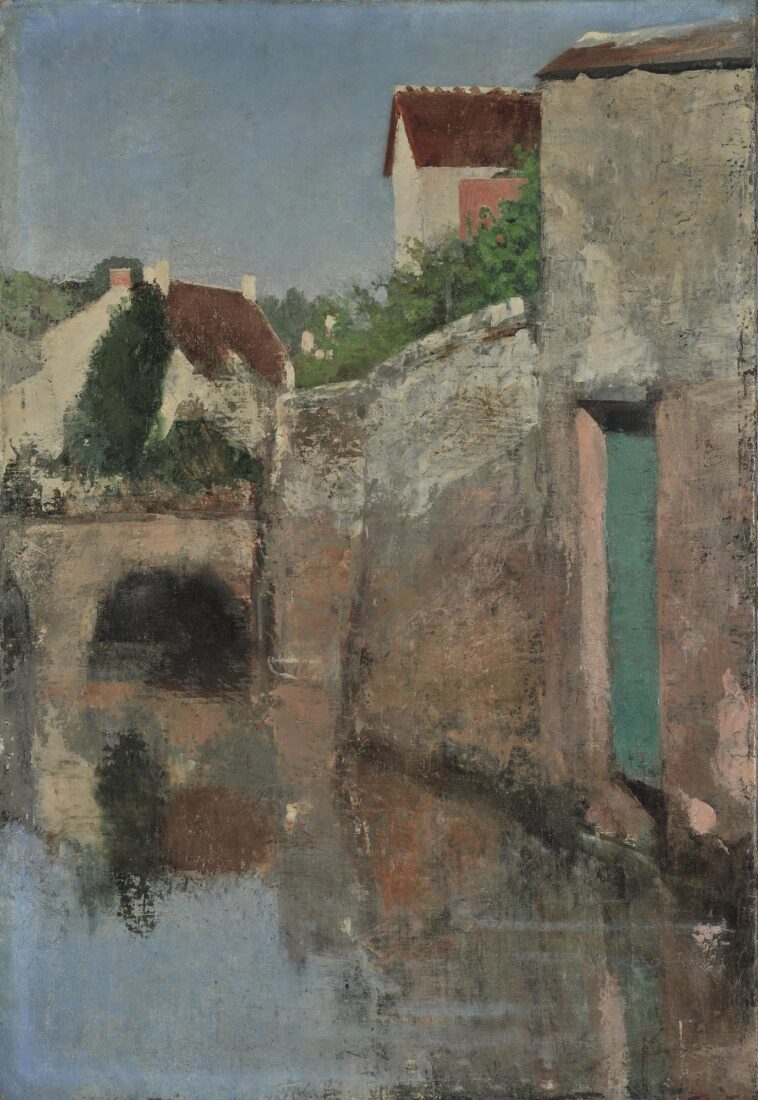
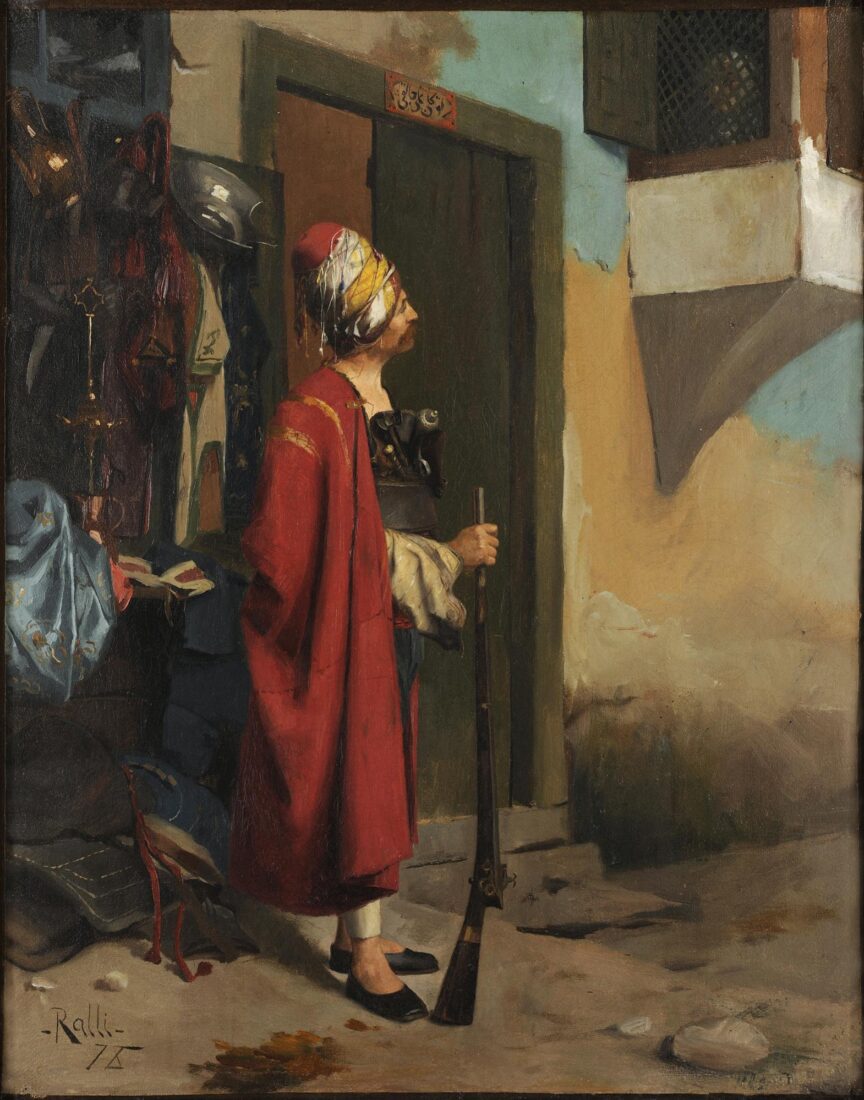
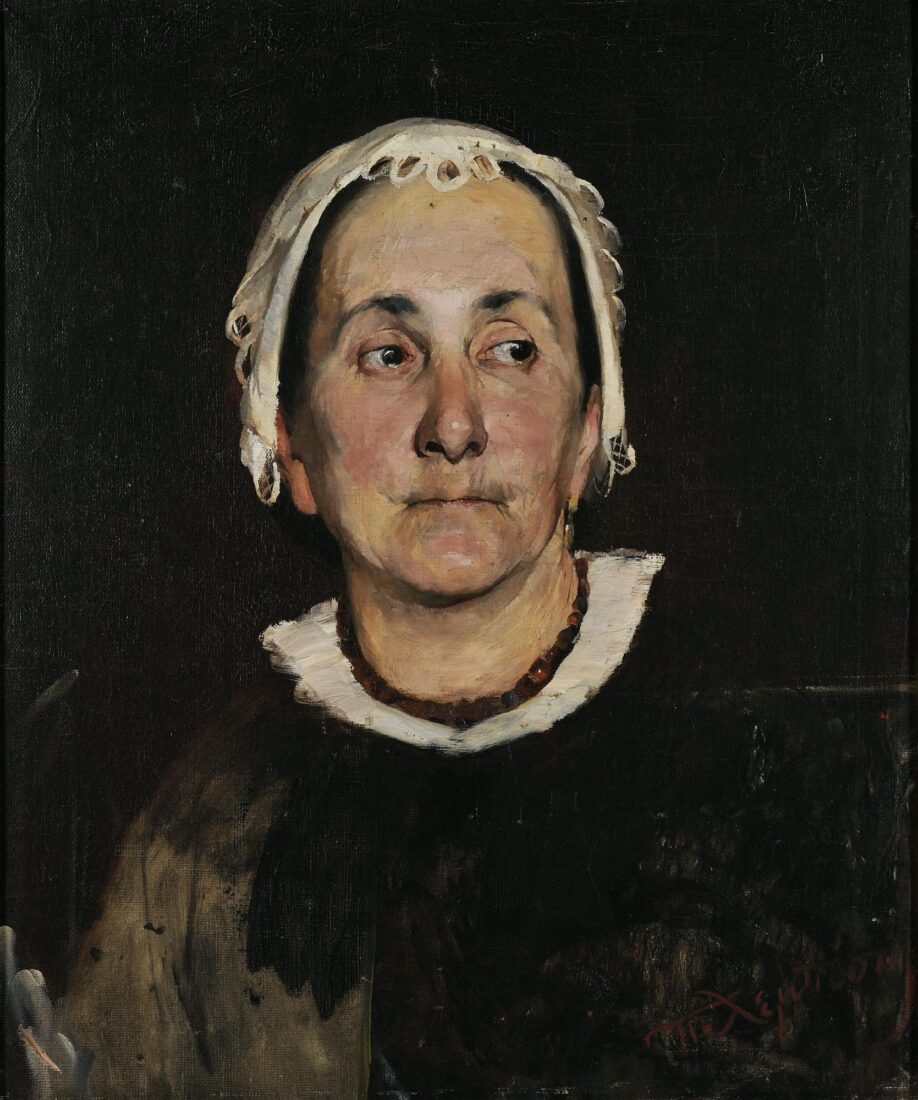
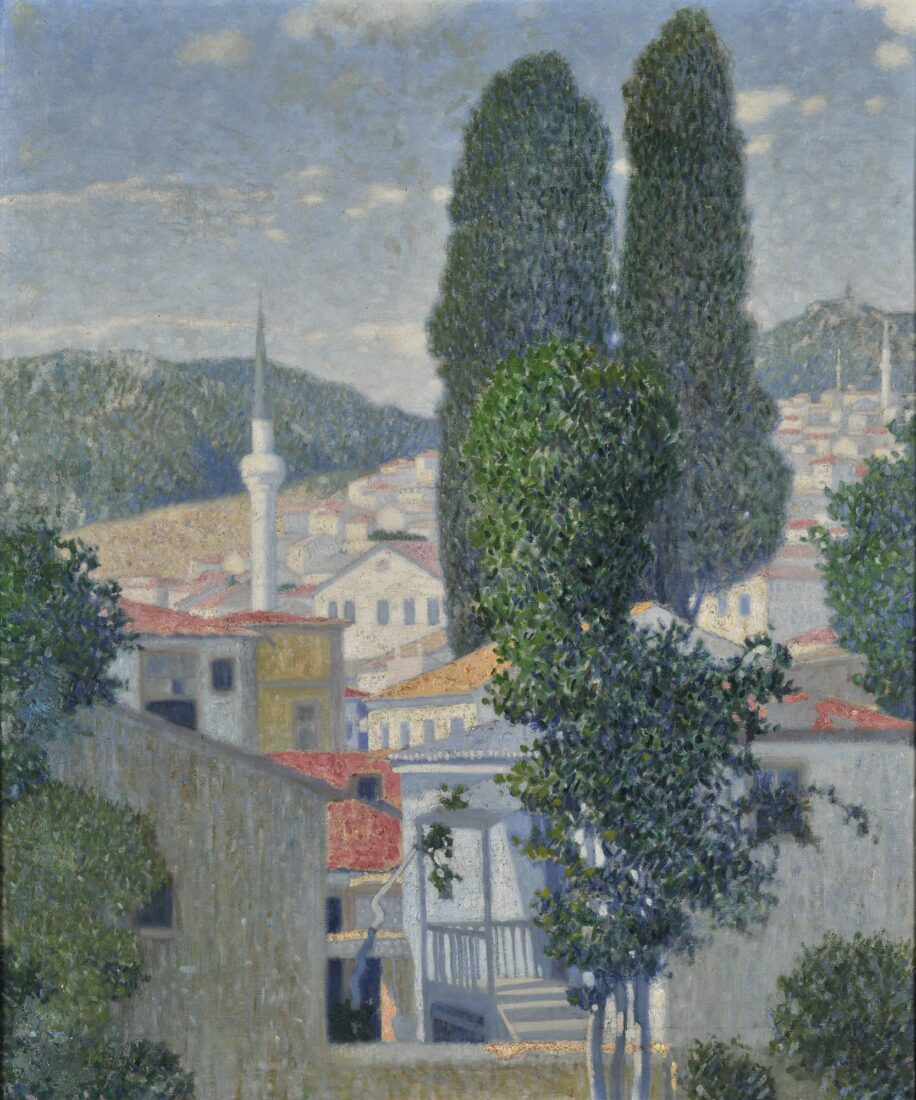
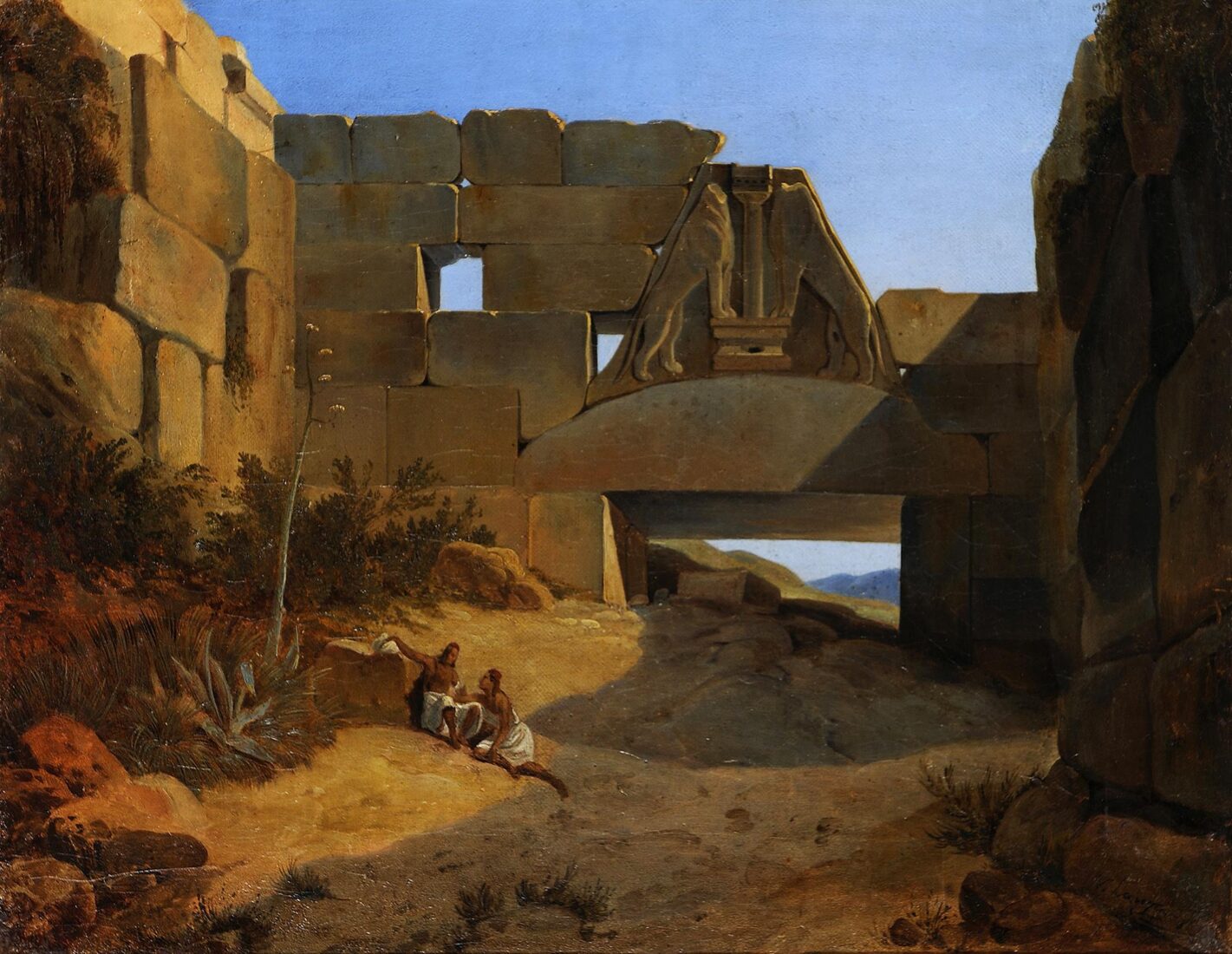
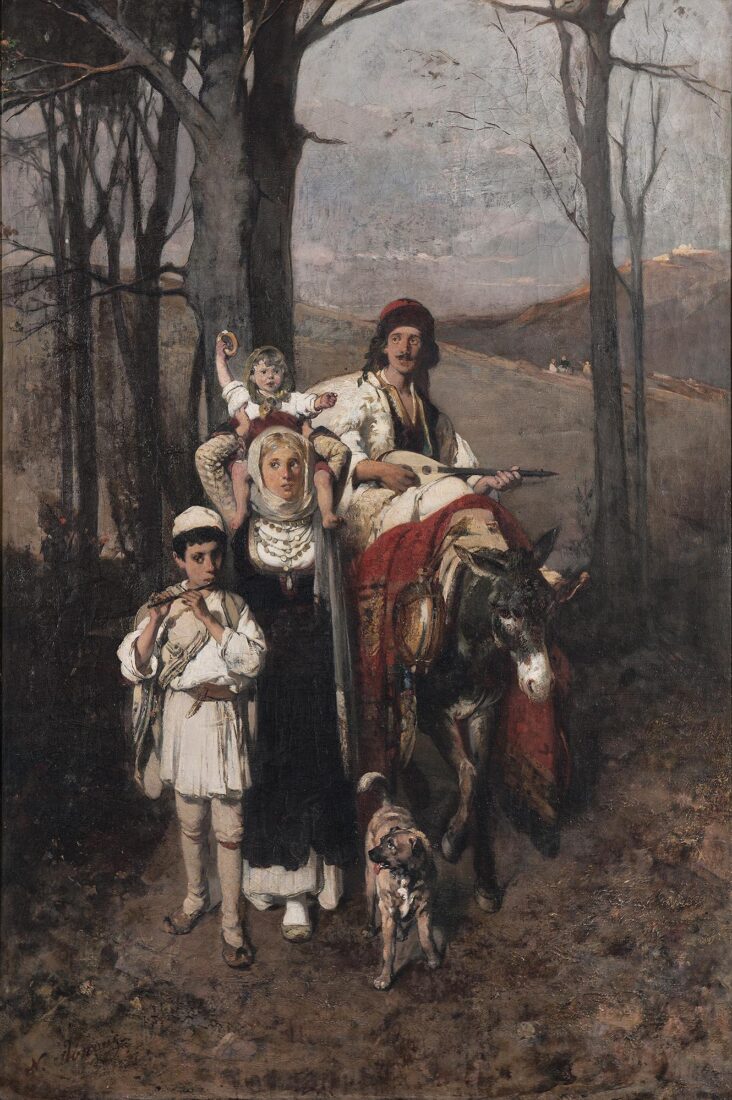
Nikephoros Lytras is considered as the founder of the Munich School. Appointed as Professor at the School of Arts in 1866, upon his return from Munich, he helped shape generations of Greek artists.
Here is one of Nikephoros Lytras’ characteristic genre paintings. A family – the father, the mother and their two children – are on their way back from a holiday on Mount Penteli. It is wintertime, as the trees are bare. Everyone is in their special holiday costume. The father is playing the lute, riding the donkey, which is decorated with colourful blankets. A wine flask hangs from the saddle. The mother follows on foot with her youngest child on her shoulders, a cookie from the feast in its hand. The eldest son walks by the mother, accompanying the lute with his flute. A gleeful dog is in front of them. The merry procession is climbing down the hill towards the viewer. It feels as if they were about to come out of the painting and enter our own living space. Their mood is contagious, and the vibrant colours, white, red, black and gold are in harmony with the joyous atmosphere of the scene. Nikiforos Lytras has masterfully and meticulously rendered it, capturing the character and mood of each figure.
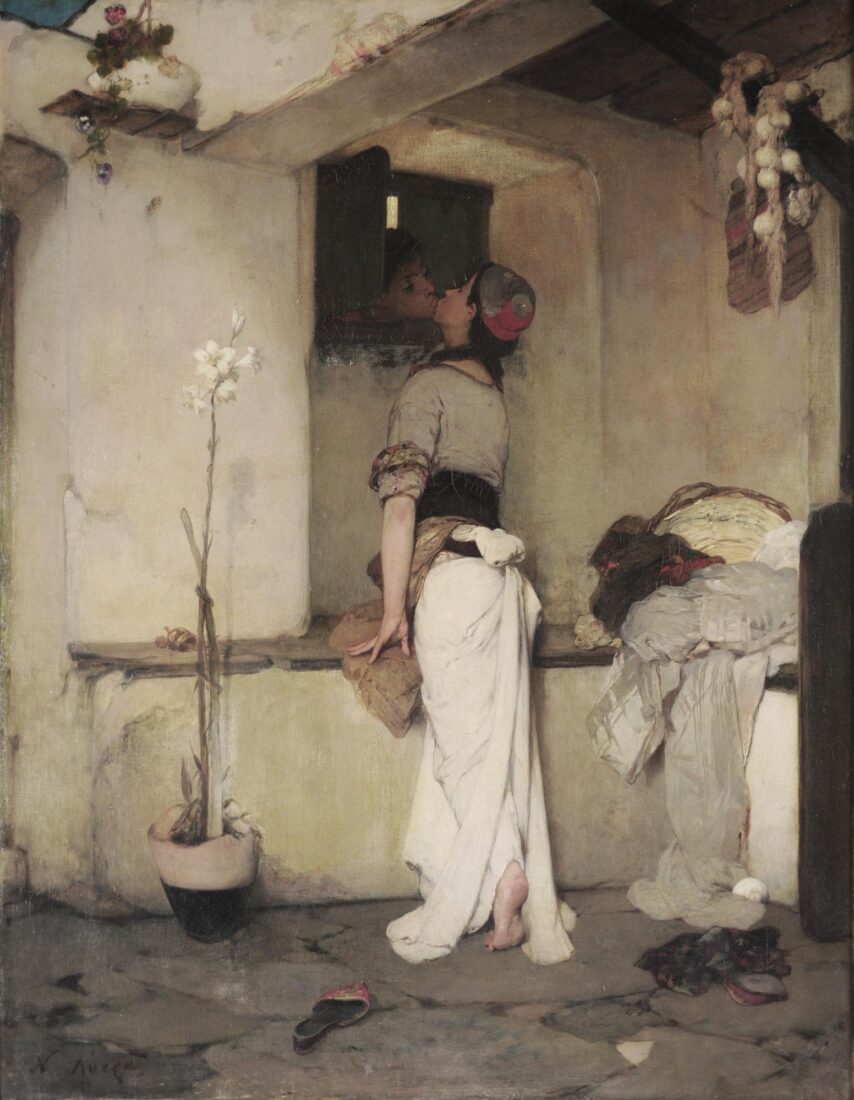
In “The Kiss”, the scene is set in a courtyard, in which a slender girl is rising on the tips of her tows in order to kiss her beloved, whose head can be seen through the window high up. The lily in the pot symbolises purity, while its slender stem echoes the slender girl’s motion. Ochre and white prevail, along with some red on the girl’s fez. The latter colour was a favourite of Nikephoros Lytras’. The abandoned slipper suggests the girl’s rush to meet her beloved, while at the same time marking space, that is, making us part of the scene.
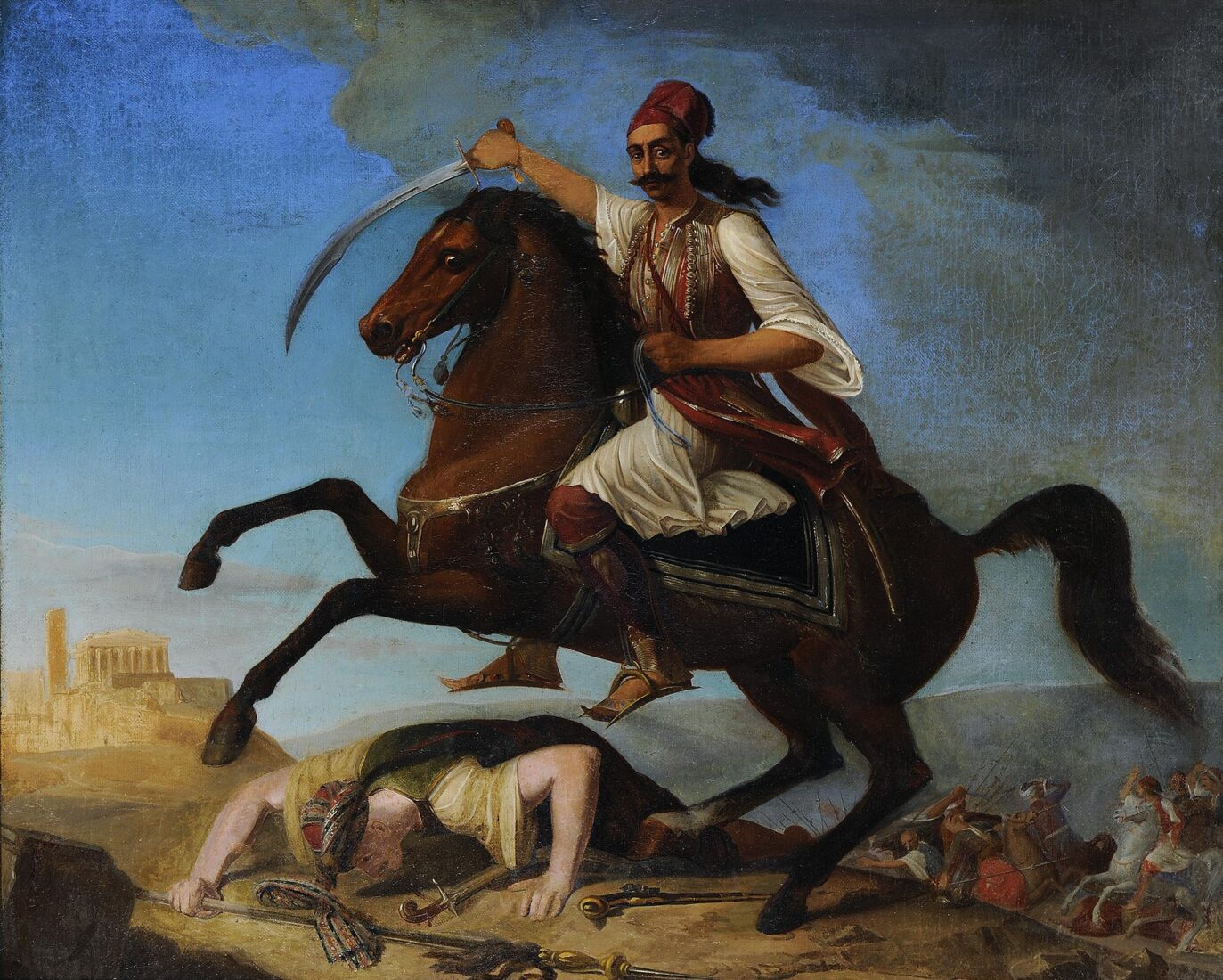
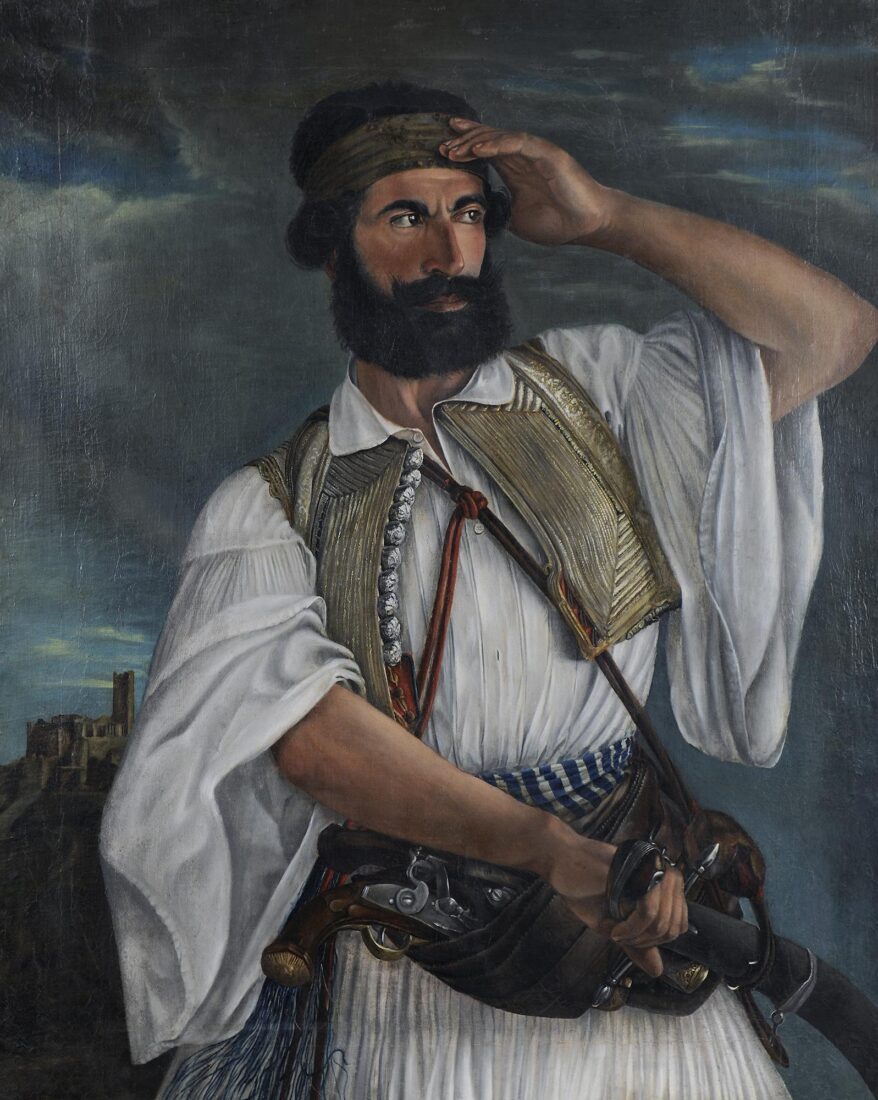
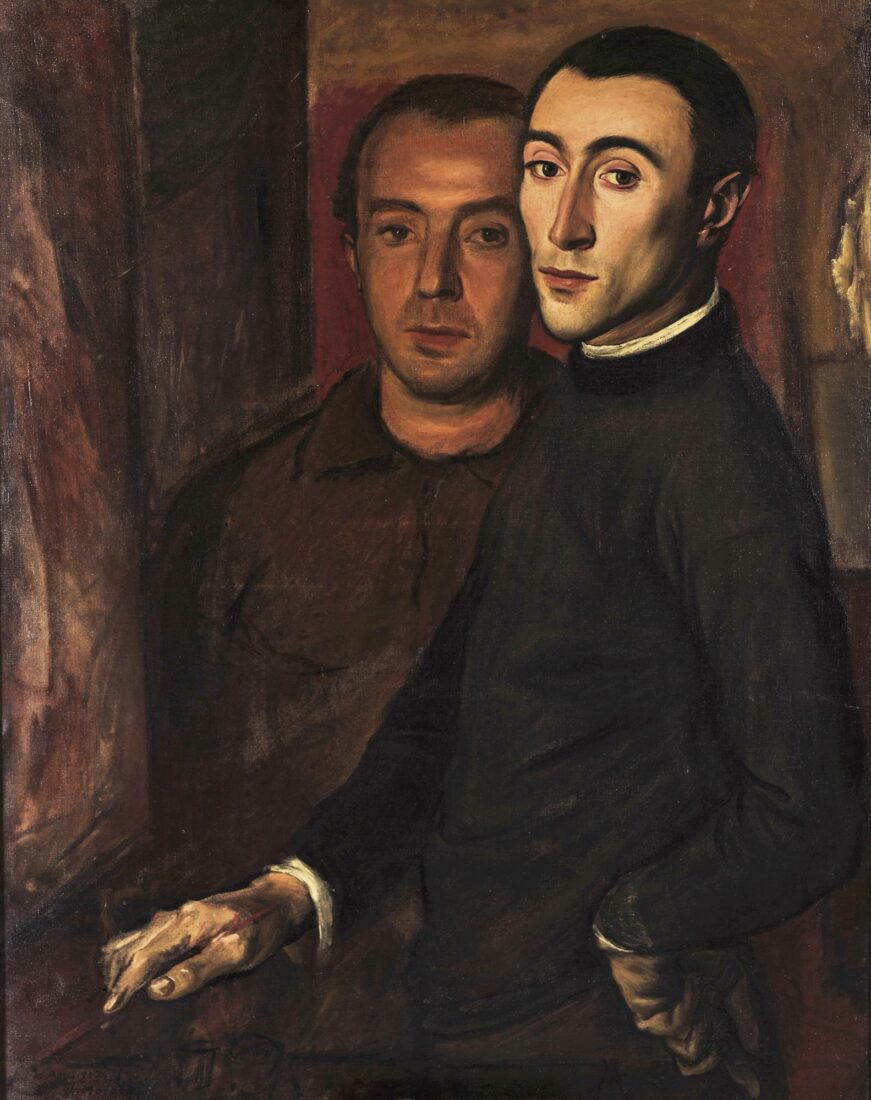

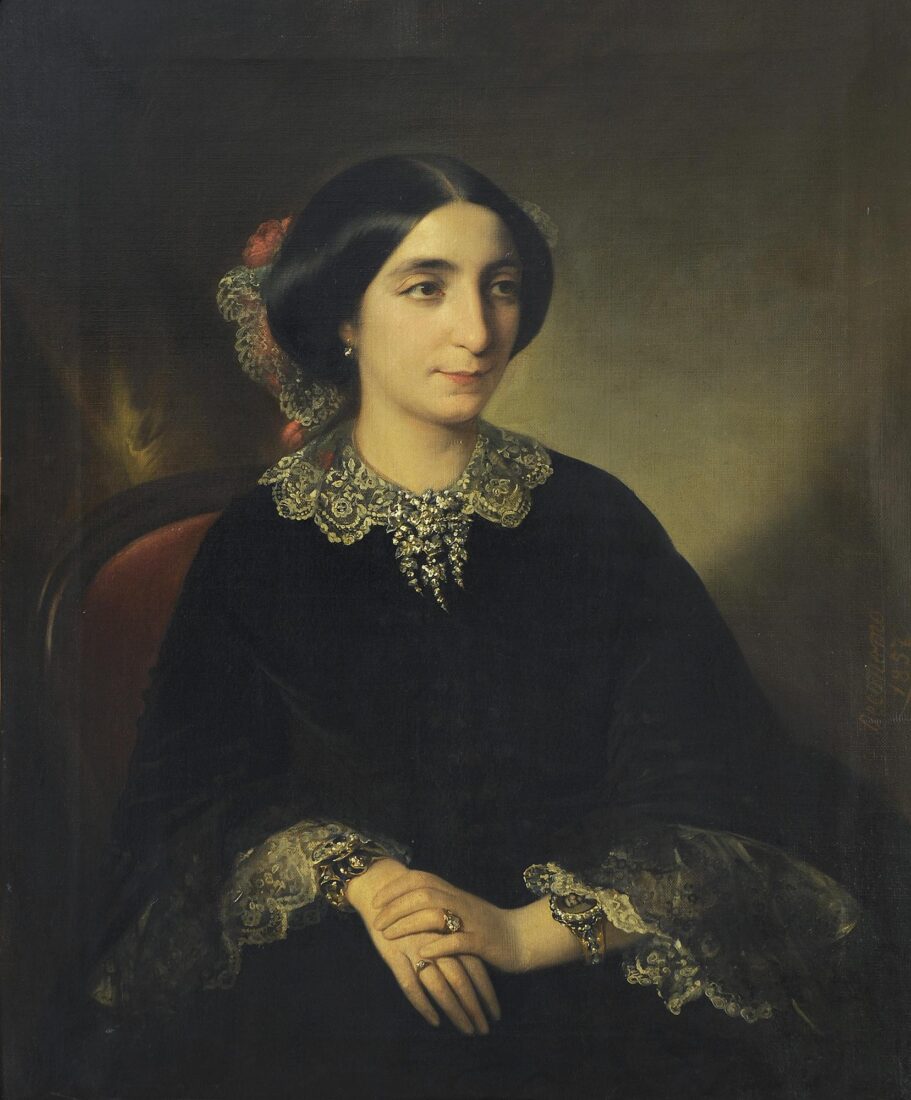
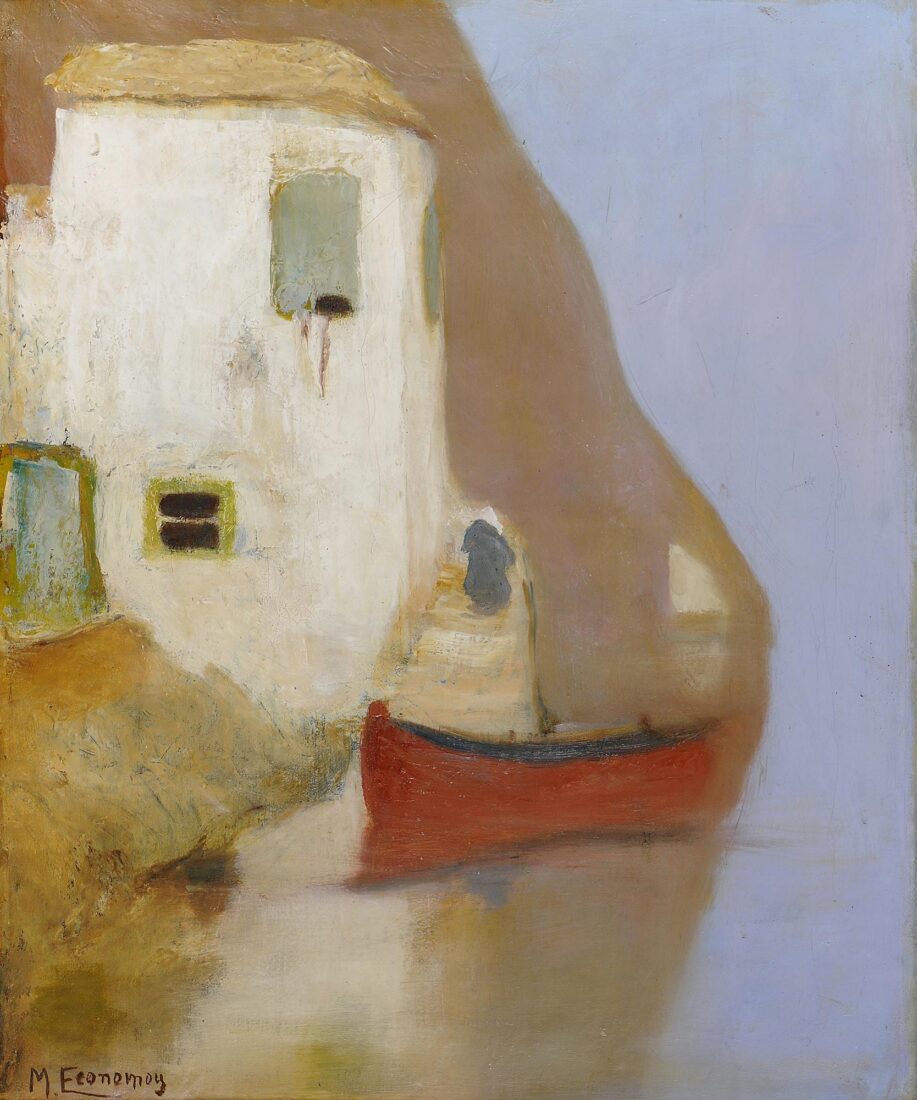
Michalis Oikonomou’s familiar style is also evident in this painting. The vertical composition is based on a diagonal. A two-floor house leans against a huge rock by the sea. A red boat is tied on the water’s edge. A female figure, once again incorporated into the landscape, is climbing on the steps of a sloping path. There are no shadows here. The colour palette is the one always used by Michalis Oikonomou: white, ochre, sky-blue, red, a touch of black. Everything is suspended, captured in fluid shapes, faint outlines, impregnated with atmosphere. Everything is kept within the surface, declaring, “I am a painting — not a ‘photographic’ reproduction of the world”.
Like other Greek artists, Michalis Oikonomou was influenced by the French painters who established the Nabi Group. Nabi is a Yiddish word, meaning prophet. The painters Pierre Bonnard (1867-1947), Edouard Vuillard (1868-1940), Maurice Dennis (1870-1943) and others were members of this group. They painted landscapes, interiors, still lifes, everyday life scenes, incorporating figures as if they were part of the space, just like Michalis Oikonomou does, often charging their images with symbolism. This is how Oikonomou’s paintings must be seen, too — like a journey in the land of dreams.

